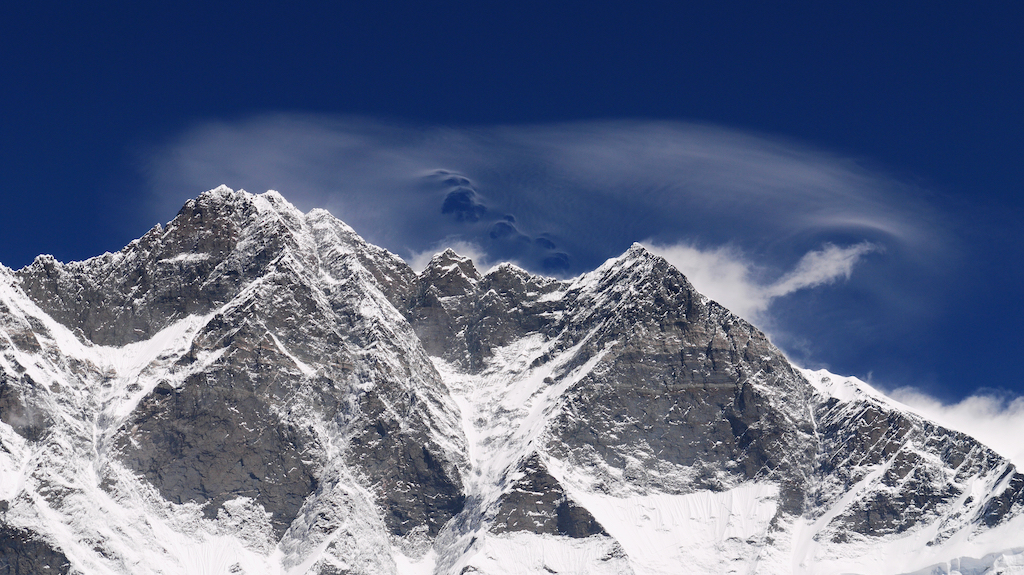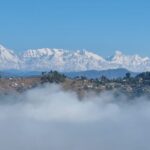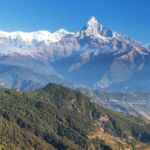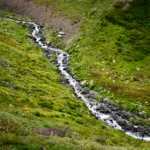At 8,516 meters (27,940 ft) in the Himalayan range, Lhotse is the 4th highest peak on the planet. It is distinctive because it can be reached using almost the same path as Mount Everest. The path to camp 4 is the exact same course taken by Tenzing and Hillary on their 1953 first climb of Everest. The Lhotse Expedition’s ascending path parallels the Everest ascent, along with the appropriately called Lhotse face mostly all the way to the summit of Everest’s Geneva Spur. From there, it climbs steeply via a lengthy couloir.
The lowest peak of Lhotse, which has three summits, is 8,383 meters high (Lhotse Shar). Lhotse East often referred to as Mid, comes in second in terms of altitude and is 8,413 meters high. Lhotse Main, the tallest mountain, is 8,516 meters high. In 1956, it was attained for the very first time. It’s interesting to note that Lhotse Middle’s first complete climb didn’t occur until 2001.
The Lhotse Couloir is the primary route to the peak. It is situated on the mountain’s western face, also known as the Lhotse Face. The excursion participants’ most difficult ascent will take them up the couloir, a huge ice canyon. Its climb can be as extreme as 80 degrees in some areas.
The Geneva Spur and the Yellow Band, two rocky regions, are present there. Along with the difficult terrain, hikers passing through the gorge must be cautious of intermittent snowfall.

Because the permit costs are far lower and the climb is comparable to the Everest Expedition, ascending Lhotse is a fantastic substitute that is also significantly less expensive. Lhotse is a stunning mountain within its own terms, despite the fact that it is sometimes regarded as a small eight-thousander.
This is because of its incredible southern edge, which climbs 3.2 km in just 2.25 km of horizontal space, marking it the steepest experience of this scale on the globe. Many unsuccessful Lhotse attempts, including major casualties, and only a few climbs have occurred on the southern side. Because the South Col connects the two points, ascending Lhotse may be undertaken as an addition to an ascent of Everest.
The duration of the entire voyage is 56 days. The trip’s beginning and finish are both in the capital, Kathmandu. Visitors will stop at the Tengboche Monastery, the largest Buddhist center in the area, in addition to the Namche Bazaar, which is teeming with local customs, along the route. The main ascent will begin from that point with high campsites along the way.
The trip to Base Camp of Everest which spans four days is one of the most well-liked treks in the world. It provides beautiful views of the trees and high mountains in the area.
The Khumbu icefall is traversed via the Lhotse excursion trail. It proceeds along the same route as the typical Everest climb until it passes over the Yellow Band. The pathways then split: Lhotse climbing groups proceed to the right, whereas Everest climbing groups go to the left of South Col.
Nearest Help Post
The nearest health center is 14.9kms away in Periche. The closest police station is at Namche (34.1 km away) and so is the army post.
If you are a tourist, the nearest tourist police post is at Lukla (51.1 km away). Lobuche is the nearest settlement, just 8.3 km away.
Royalty Fees
For Nepalese citizens, the government of Nepal charges just Rs.2500 if they want to climb the mountain in the summer and winter seasons. The charges double to Rs.500 in the Autumn and it doubles again to Rs.10000 in the Spring.
For the ones from abroad, the charges are a bit different. For the summer and winter seasons, the charge is $450, and the fee doubles if you want to climb the peak during the Autumn. The spring season is by far the most expensive one with an $1800 royalty fee.





